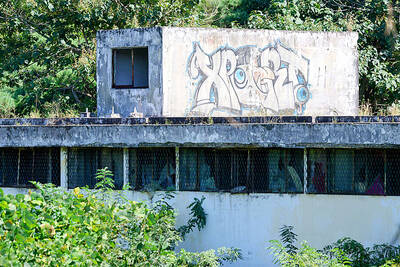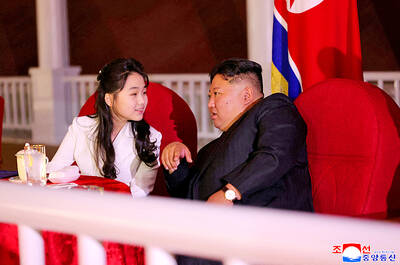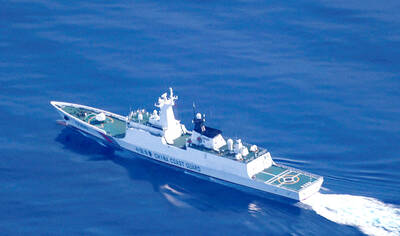A drive through the windblown San settlements of grass and wood scattered across southern Africa is a very depressing experience: families ravaged by poverty, unemployment and alcoholism -- their hunter-gatherer tradition a fading memory.
For the past few years their leaders have spoken of a bonanza from western pharmaceutical companies in payment for the San Bushmen's knowledge of a plant that might one day cure obesity.
They have yet to see a penny.
"They are frustrated by the delay, but these are people who take things as they are. There is not huge agitation yet," said Richard Wicksteed, a documentary maker who has filmed them for two decades.
"The average San knows there is value in their medicinal knowledge. Having used hoodia when they were starving, the irony of obese westerners using it to lose weight is not lost on them."
San leaders were gathered in Tanzania for a meeting Wednesday and unaware of the Unilever deal, but once informed they would likely welcome it, Wicksteed said.
"It's very good news if handled correctly," he said.
If a portion of Unilever's millions does reach the San it would buck a long, sad history of dispossession.
These indigenous people of southern Africa have a culture dating back 20,000 years. They have survived the harshest environments, but not the predations of other humans. The more warrior-like Bantu tribes from the north, then European colonialists and finally the apartheid regime swept through their land, killing, appropriating anything of value and pushing the San into dwindling pockets of territory.
The three San groups most closely associated with hoodia -- the Khwe, Xu and Khomani -- number only a few thousand. The total number of San across the Kalahari is estimated at 100,000.
Post-apartheid South Africa tried to redress some of the injustice by granting them ownership of more than 40,000 hectares.
But their communities are broken. Only a handful remain of the hunter-gatherers of western imagination. The rest scrabble what living they can in bleak settlements which are often hundreds of miles from decent roads, schools and clinics.
"This is the last stand of the San -- the last generation that still retain some of their culture and heritage. They are a tiny people with a tiny voice," Wicksteed said.
Some South African firms have already tried to pirate the San's knowledge of the hoodia, and Unilever and Phytopharm are expected to try to stop such practices.
Chris De Plessis, a lawyer who is representing the San in Botswana, said that few ordinary San understood the ramifications of intellectual property rights, and mistrust was growing that their leaders might pocket the hoodia revenue -- if it ever comes.

LANDMARK CASE: ‘Every night we were dragged to US soldiers and sexually abused. Every week we were forced to undergo venereal disease tests,’ a victim said More than 100 South Korean women who were forced to work as prostitutes for US soldiers stationed in the country have filed a landmark lawsuit accusing Washington of abuse, their lawyers said yesterday. Historians and activists say tens of thousands of South Korean women worked for state-sanctioned brothels from the 1950s to 1980s, serving US troops stationed in country to protect the South from North Korea. In 2022, South Korea’s top court ruled that the government had illegally “established, managed and operated” such brothels for the US military, ordering it to pay about 120 plaintiffs compensation. Last week, 117 victims

‘HYANGDO’: A South Korean lawmaker said there was no credible evidence to support rumors that Kim Jong-un has a son with a disability or who is studying abroad South Korea’s spy agency yesterday said that North Korean leader Kim Jong-un’s daughter, Kim Ju-ae, who last week accompanied him on a high-profile visit to Beijing, is understood to be his recognized successor. The teenager drew global attention when she made her first official overseas trip with her father, as he met with Chinese President Xi Jinping (習近平) and Russian President Vladimir Putin. Analysts have long seen her as Kim’s likely successor, although some have suggested she has an older brother who is being secretly groomed as the next leader. The South Korean National Intelligence Service (NIS) “assesses that she [Kim Ju-ae]

In the week before his fatal shooting, right-wing US political activist Charlie Kirk cheered the boom of conservative young men in South Korea and warned about a “globalist menace” in Tokyo on his first speaking tour of Asia. Kirk, 31, who helped amplify US President Donald Trump’s agenda to young voters with often inflammatory rhetoric focused on issues such as gender and immigration, was shot in the neck on Wednesday at a speaking event at a Utah university. In Seoul on Friday last week, he spoke about how he “brought Trump to victory,” while addressing Build Up Korea 2025, a conservative conference

China has approved the creation of a national nature reserve at the disputed Scarborough Shoal (Huangyan Island, 黃岩島), claimed by Taiwan and the Philippines, the government said yesterday, as Beijing moves to reinforce its territorial claims in the contested region. A notice posted online by the Chinese State Council said that details about the area and size of the project would be released separately by the Chinese National Forestry and Grassland Administration. “The building of the Huangyan Island National Nature Reserve is an important guarantee for maintaining the diversity, stability and sustainability of the natural ecosystem of Huangyan Island,” the notice said. Scarborough